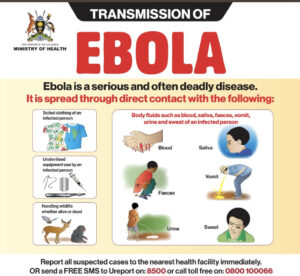For patients with end-stage lung disease, lung transplantation offers hope for a second chance at life. Today, lung transplantation is a routine treatment, however, it took twenty years of research between the 40s and 60s to perfect the surgery and in August 1968, Dr. Denton A. Cooley conducted the first successful heart-lung transplant in a 2-month-old girl with congestive heart failure and recurrent pneumonia.
 ANATOMY
ANATOMY
The respiratory system consists of the upper and lower respiratory tracts. The upper respiratory tract includes the nasal cavity, paranasal sinuses, and nasopharynx. The lower respiratory tract begins at the level of the larynx and includes the trachea, which divides into the right and left main bronchi; inside the lung, the bronchi fan out into numerous small airway branches culminating in tiny alveolar sacs. When the heart pumps blood through the pulmonary artery into the lungs, the lungs oxygenate the blood, and the oxygenated blood flows back to the heart through the pulmonary veins. During a lung transplant, the surgeon disconnects the veins, arteries, and airway and sews them to the new donor lung.
INDICATIONS AND EVALUATION
Patients referred for lung transplantation are typically out of options and looking for a way to continue living and breathing. Transplantation is recommended for patients with end-stage lung disease and a 2-year mortality risk >50% without a transplant. The patient should also have a high likelihood of 90-day and 5-year post-transplant survival based on the patient’s overall medical condition.
The Scientific Registry for Transplant Recipients divides lung transplantation patients into 4 major groups according to their disease:
-
-
- Obstructive lung disease (such as chronic obstructive pulmonary disease (COPD) emphysema),
- Pulmonary vascular disease (such as idiopathic pulmonary arterial hypertension)
- Cystic fibrosis and Immunodeficiency disorders
- Restrictive lung disease (idiopathic pulmonary fibrosis)
-
There are several specific and unique conditions under each of these categories that are often considered for transplant.
Patients generally undergo an extensive 7-day workup consisting of imaging studies, lab tests, and specialist consultations. While there are no specific age or weight cutoffs for lung-transplant candidates, the team puts together the entire picture of the person’s health and prognosis to determine his or her suitability to receive a transplant. Typically, 75 years is the upper limit for age, and a body mass index (BMI) of 35 is the upper limit for weight.
Patients need to stop smoking and to participate in a pulmonary rehabilitation program to ensure a successful outcome. If a patient is unable to walk before the transplant operation, it is unlikely that the transplant will improve their health or ability to function.
WAITLIST
Once patients are put on the waitlist for a donor lung, the average amount of time before they receive a transplant is 3-5 months. The team calculates patients’ Lung Allocation Score (LAS), which prioritizes them on the waitlist depending on the severity of their illness. Priority also depends on distance: Recipients are given priority if their hospital is within 250 nautical miles of the donor hospital.
IMMUNOSUPPRESSION
After receiving a lung transplant, patients must be on lifelong immunosuppression to prevent rejection of the transplanted lung. Before the operation, the donor and recipient’s blood antibodies are compared to minimize the risk of rejection.
DONOR PROCESS
Selection: The donor lungs are carefully assessed through chest x-rays, computed tomography scans, bronchoscopy, and visual inspection by the donor procurement team. Once a lung is removed from the donor’s body, it is placed in ice or in a device that ventilates it and keeps blood pumping through it.
RECIPIENT PROCEDURES
Preparation: The recipient is admitted to the hospital and prepared for surgery. The patient is placed under general anesthesia. The incision can be either up and down through the middle of the breast bone or side to side under the breast fold, depending on the individual patient’s anatomy. Minimally invasive options are also available depending on the patient anatomy. Sometimes, the surgeon uses full or partial cardiopulmonary bypass support; other times, the operation is done without bypass.
OUTCOMES
After the transplant operation, patients are carefully monitored in the intensive care unit. Lung function, heart function, mental status, and kidney function are all carefully assessed, and the patient is monitored for bleeding. The first 24-48 hours are very important after surgery. After this, the patients undergo extensive physical therapy and learn about the medication regimen they will need to follow after they are discharged from the hospital.
Long-term Follow-up and Outcomes: After patients leave the hospital, they are followed up every 3 months for the first year and then annually for 5 to 10 years. In 2016, data from the International Society for Heart and Lung Transplantation (ISHLT) registry, which tracks the outcomes of patients treated at hundreds of specialty transplant hospitals around the world, showed that patients’ median survival after transplant was 5.8 years. But patients who survived the first year had a median survival of 8.1 years. The ISHLT data also showed the following survival rates in the chart below. Similarly, according to US registry data, survival rates at 3 months, 1 year, 3 years, and 5 years are 93%, 85%, 68%, and 56%, respectively.
-
-
-
- 3 months 89% (93% US registry)
- 1 year 80% (85% US registry)
- 3 years 65% (68% US registry)
- 5 years 54% (56% US registry)
- 10 years 32%
-
-
-
Survival can vary by the patient’s disease. Average survival times for patients with cystic fibrosis, COPD with alpha-1 antitrypsin deficiency (AATD), idiopathic interstitial pneumonia, and re-transplantation are 8.9 years, 6.7 years, 4.8 years, and 2.8 years, respectively.


